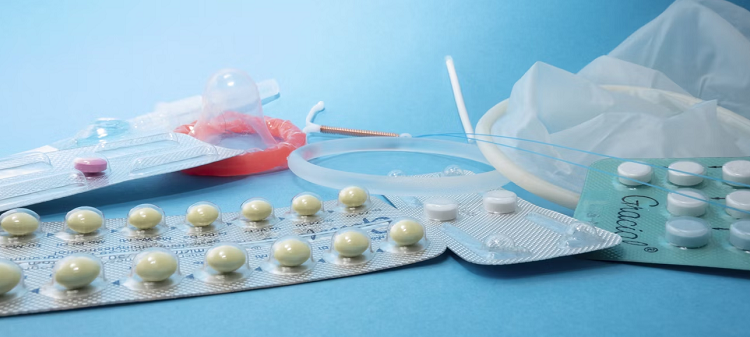The advent of medical devices has undeniably revolutionized women’s healthcare, offering innovative solutions for various conditions. However, alongside the benefits, concerns about the risks and complications associated with these devices have emerged.
In this article, we will dive into the multifaceted landscape of medical devices designed for women, exploring potential pitfalls and complications that can arise.
Contraceptive Devices
Contraceptive devices, from hormonal birth control methods to intrauterine devices (IUDs), offer women effective options for family planning. However, concerns persist regarding potential side effects and complications. As noted by Everyday Health, hormonal contraceptives such as pills can lead to hormonal imbalances, causing mood swings and altered libido.
Additionally, device migration or displacement poses risks, impacting the effectiveness of these methods. It is crucial for healthcare providers to thoroughly discuss these potential issues with patients, ensuring informed decision-making and personalized contraceptive choices.
Regular monitoring and open communication between healthcare professionals and patients can mitigate the risks associated with contraceptive devices.
Breast Implants
Breast augmentation, often sought for aesthetic reasons, introduces potential risks that demand careful consideration. Implant rupture or leakage can lead to silicone leakage, necessitating removal and replacement.
Annals of Translational Medicine notes that breast implant-associated anaplastic large cell lymphoma (BIA-ALCL) is a rare complication associated with breast implants. This highlights the importance of postoperative monitoring.
Patients contemplating breast implants must weigh the complications against desired outcomes, and regular follow-ups with healthcare providers are essential for early detection and intervention.
Intrauterine Devices (IUDs)
Intrauterine devices (IUDs) stand as a reliable long-term contraceptive solution, but not without their set of complications. Instances of perforation, where the device punctures the uterine wall, demand attention.
Expulsion, where the IUD unintentionally falls out, and the risk of infections are crucial considerations. Healthcare providers must thoroughly educate users about proper insertion techniques, potential signs of complications, and the need for regular check-ups.
Paragard is one such IUD that has been under scrutiny due to reports of increased menstrual bleeding and cramping associated with its non-hormonal design. While Paragard offers a hormone-free alternative, users should be aware of these potential side effects during the decision-making process.
Hormone Replacement Therapy (HRT)
Hormone Replacement Therapy (HRT) serves as a vital option for alleviating menopausal symptoms, yet it comes with its own set of risks. Women undergoing HRT may face an increased risk of cardiovascular events, breast cancer, and blood clots.
To mitigate these risks, healthcare providers must carefully assess individual patient histories and tailor HRT plans accordingly. Regular monitoring, open communication, and exploring alternative therapies when appropriate are critical components of ensuring the benefits of HRT outweigh potential complications.
Vaginal Mesh
Vaginal mesh, once hailed as a solution for pelvic organ prolapse and stress urinary incontinence, has garnered controversy due to associated complications. Mesh erosion, where the material protrudes through vaginal walls, infections, and chronic pain have been reported.
The medical community acknowledges these concerns, prompting regulatory scrutiny and increased patient awareness. TruLaw highlights that in recent years, the controversy surrounding vaginal mesh has escalated into a legal landscape, with numerous lawsuits filed against manufacturers.
The vaginal mesh lawsuit alleges negligence, inadequate warnings, and failure to address the severity of complications. According to Drugwatch, settlements in cases such as this can take anywhere from six months to several years. Fortunately, 95% of the transvaginal mesh cases have been resolved. It is expected that future cases will also settle quickly.
Menstrual Health Devices
Innovations in menstrual health devices provide alternatives for managing periods, such as menstrual cups and period-tracking apps. While these present eco-friendly options, concerns about toxic shock syndrome (TSS), allergic reactions to materials, and environmental impacts demand attention.
Users must be educated on proper usage and hygiene practices to prevent TSS. Research is needed to assess the long-term health and environmental implications of these devices, ensuring a balance between menstrual health innovation and user safety.
In summary, the world of medical devices designed for women offers groundbreaking solutions alongside inherent risks. Whether addressing contraceptive methods, breast implants, intrauterine devices, hormone replacement therapy, vaginal mesh, or menstrual health innovations, careful consideration and open communication are critical.
While complications such as hormonal imbalances, implant-associated lymphoma, IUD perforation, and mesh-related issues demand attention, proactive monitoring and informed decision-making can mitigate these concerns. The legal landscape surrounding vaginal mesh emphasizes the necessity for stringent regulatory measures and heightened patient awareness.
As menstrual health devices evolve, ongoing research is essential to balance innovation with safety and environmental considerations. In navigating this intricate terrain, a personalized, informed, and vigilant approach will enable women to reap the benefits of medical advancements while minimizing complications.


